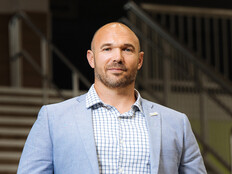Seven Steps to Effective Technology Integration
Mission: get 229 teachers to integrate IT into the curriculum through the introduction of classroom technologies.
Now that we're many decades into what has come to be known as the Information Age, it seems appropriate to take stock of how far we've come and where we're going.
As early as 1980, when his seminal book Mindstorms: Children, Computers, and Powerful Ideas was published, educational theorist Seymour Papert predicted a future in which computers would provide a means to a new way of learning. He couldn't have been more right.
For the past 15 years, I have worked in the field of educational and instructional technology. Since March 2006, I've served as instructional technology specialist for the Gettysburg Area School District, a six-school system with more than 3,000 students in Gettysburg and Cashtown, Pa.
When Superintendent William H. Hall was hired in 2007, he challenged the district to move all of its classrooms to a 21st century model. Thus began my mission to get 229 teachers to integrate IT into the curriculum through the introduction of classroom technologies.
Mission Possible
We began with a pilot program that transformed three Lincoln Elementary fourth- and fifth-grade classrooms into interactive learning environments. The teachers who would be using our newly installed Smart Boards and multimedia projectors were chosen for the pilot project because of their proven proficiency with other types of technologies. They committed to 12 hours of professional development training.
By the end of the pilot's first year, every school had a waiting list of teachers eager to deploy Smart Boards and Promethean interactive whiteboards in their classrooms. The teachers who were part of the pilot project were overwhelmingly enthusiastic about the results. Students loved using the technology, and their learning experiences were significantly enhanced because of it.
The district has since completed 121 more installations. With 70 percent of our classrooms now equipped with 21st century technology, we're well on our way to achieving our superintendent's goal of districtwide technology integration. We continue to offer professional development as well, because our users have varying levels of technical expertise.
Plan of Action
Of course, successfully integrating technology into a district's curriculum takes time and patience. I recommend the following:
- Make technology integration an explicitly stated goal in your district's strategic plan. Once this goal is established, district leaders can prioritize funding allocations to meet specific objectives.
- Centralize technology decisions, including purchasing, at the district level. Doing so will reduce disparities and ensure that resources are available in all facilities.
- Target and train tech-savvy users first. Successful implementations depend on successful users. Word of mouth can make or break any technology initiative, despite your best planning, so start with each site's most technology-proficient users to build confidence and enthusiasm among other users.
- Offer professional development year-round. Many teachers are involved in extracurricular activities that make certain times of the year more difficult than others. Offer a variety of training sessions at flexible times (before school, during lunch breaks, after school and even on weekends) to accommodate hectic schedules. Also, repeat topic offerings.
- Schedule tech training to coincide with availability. Avoid conducting training on new tools to which teachers don't yet have access. They won't retain the information if they aren't able to put it to use right away.
- Start small. Integration is a journey, not a destination. Each educator has his or her own starting point based on previous knowledge and experiences, so try to avoid repetition and keep each person moving forward.
- Align what you're doing with the district curriculum and state standards. These efforts must have a purpose.
They Have Spoken
Each year, Project Tomorrow conducts a national research project that collects and reports unfiltered feedback from students, parents and teachers on key educational issues.
The latest Speak Up report, “Unleashing the Future: Educators ‘Speak Up' About the Use of Emerging Technologies for Learning,” reveals that effective technology integration within instruction is important to district administrators and principals. As they work toward this goal, they anticipate the following challenges:
- securing funding;
- staff professional development;
- ongoing technical support;
- data collection and reporting requirements;
- technology skills assessments; and
- evaluating emerging technologies for classroom use.
Kelli B. Murphy, instructional technology specialist for the Gettysburg (Pa.) Area School District, is also a corporate faculty member in the Learning Technologies Master of Science program at Harrisburg University.







